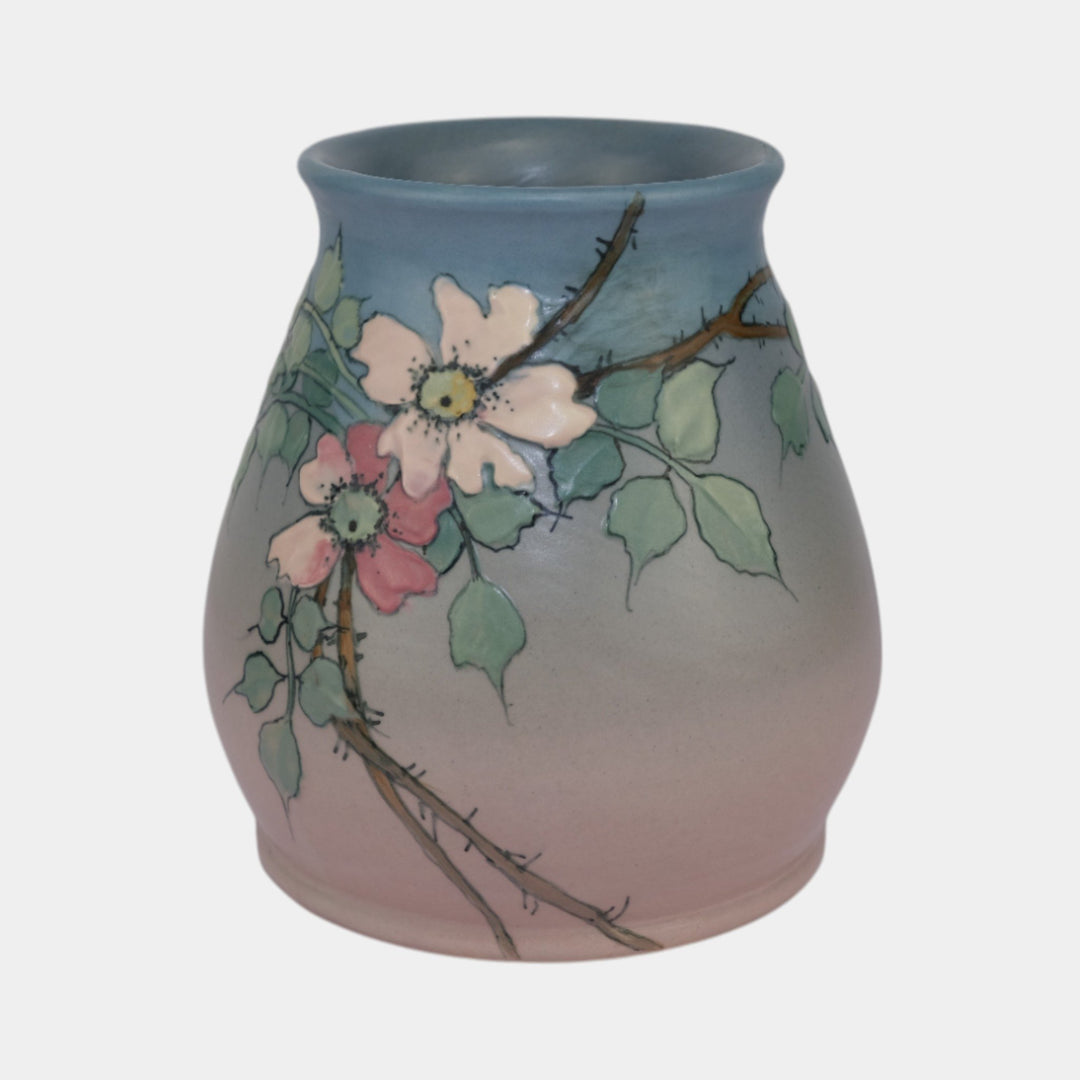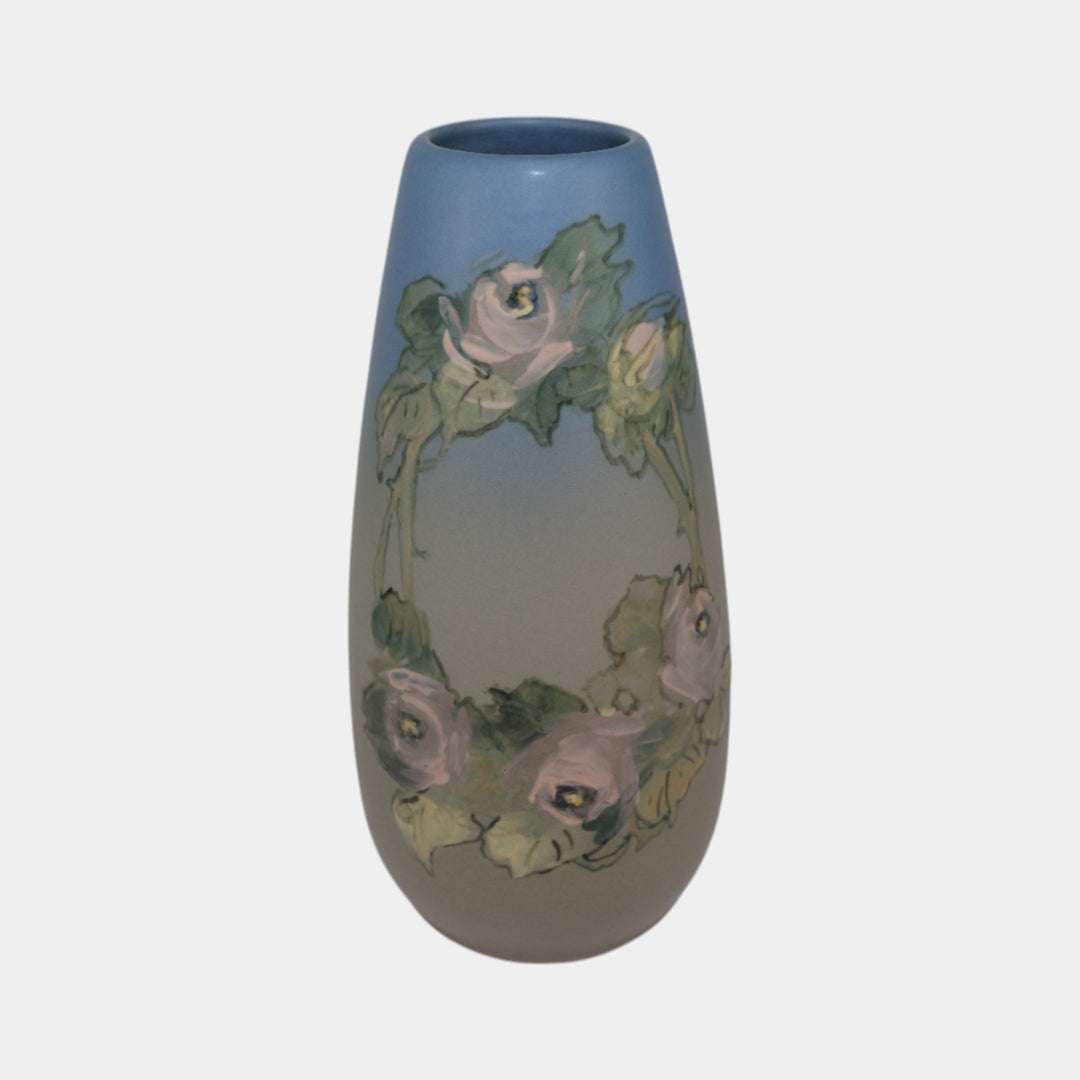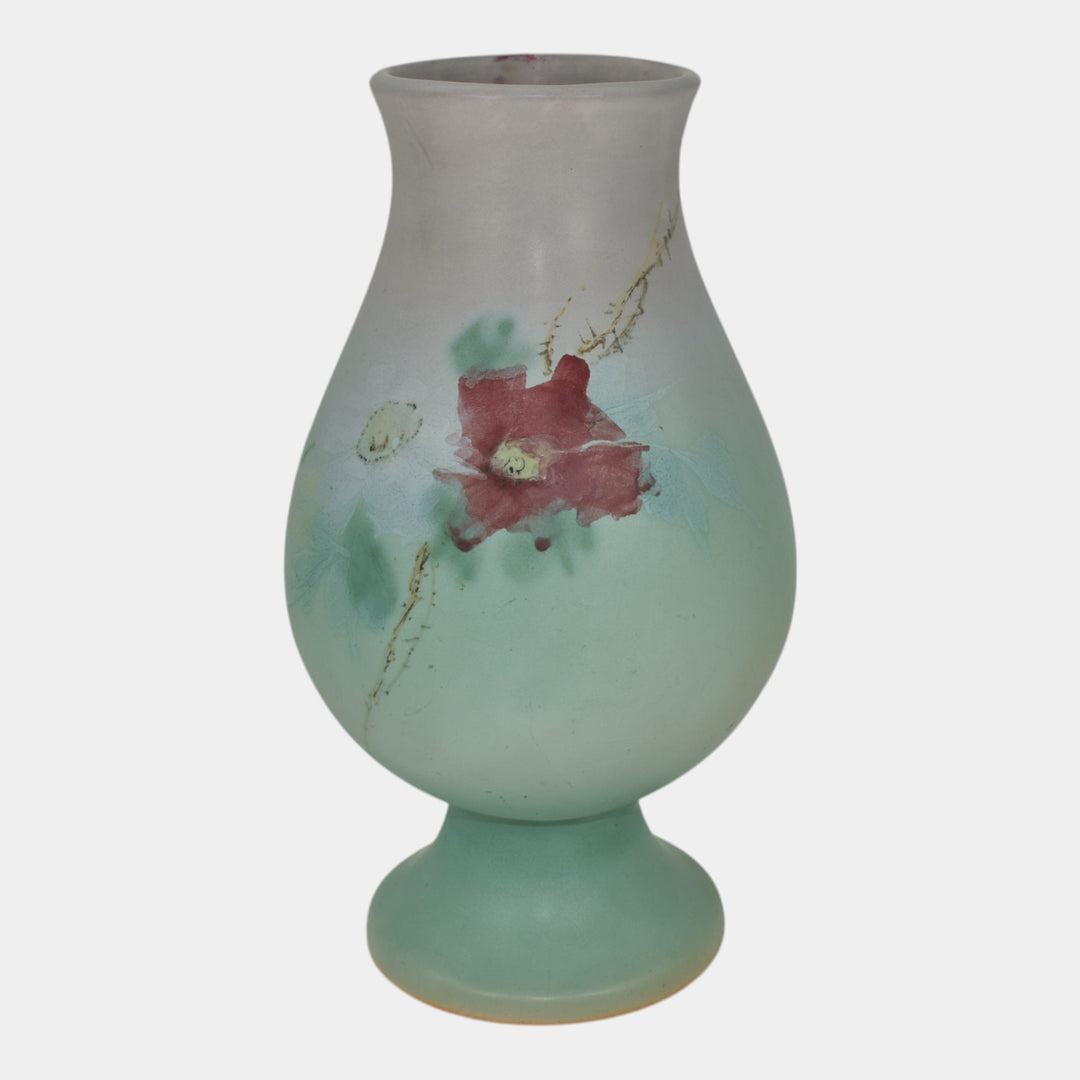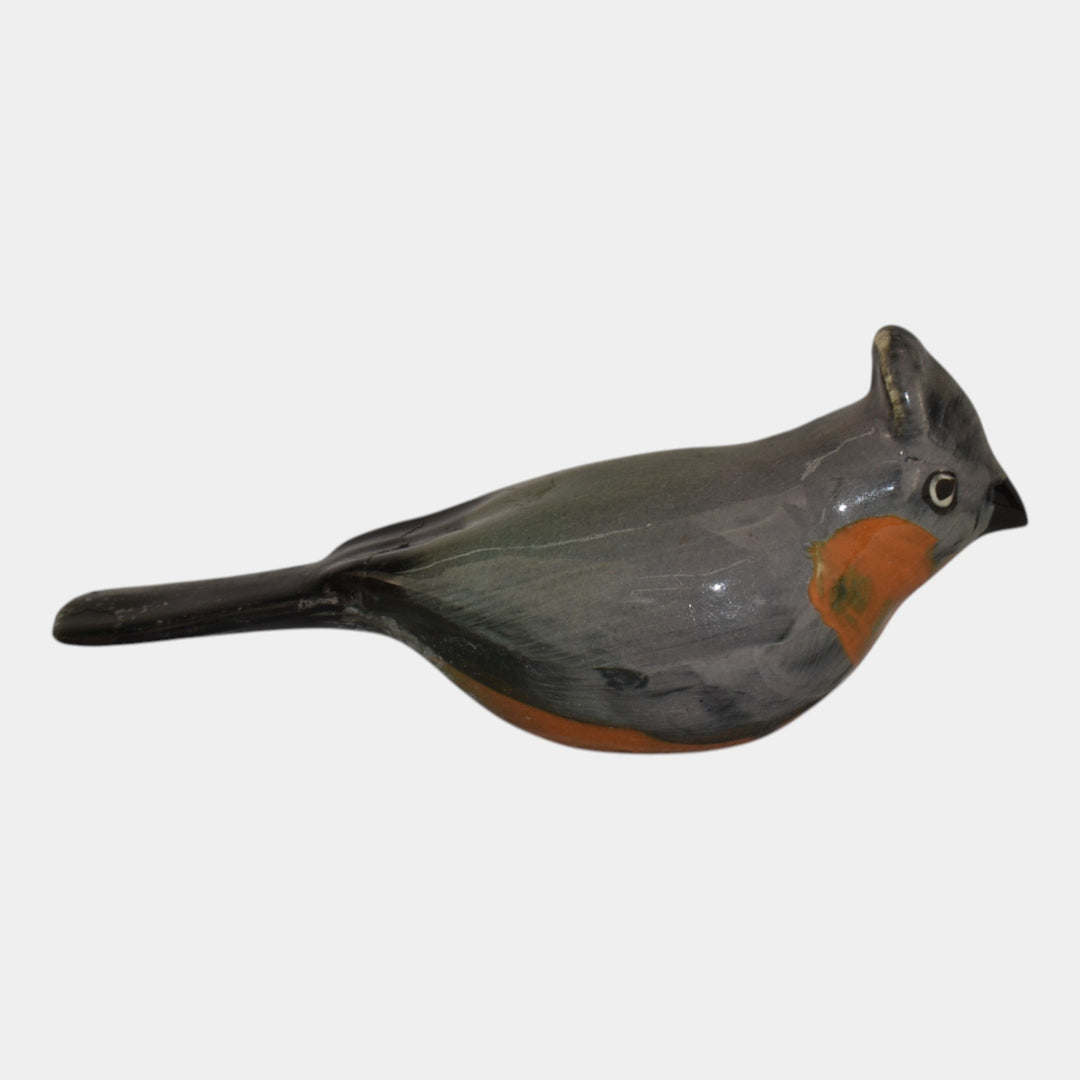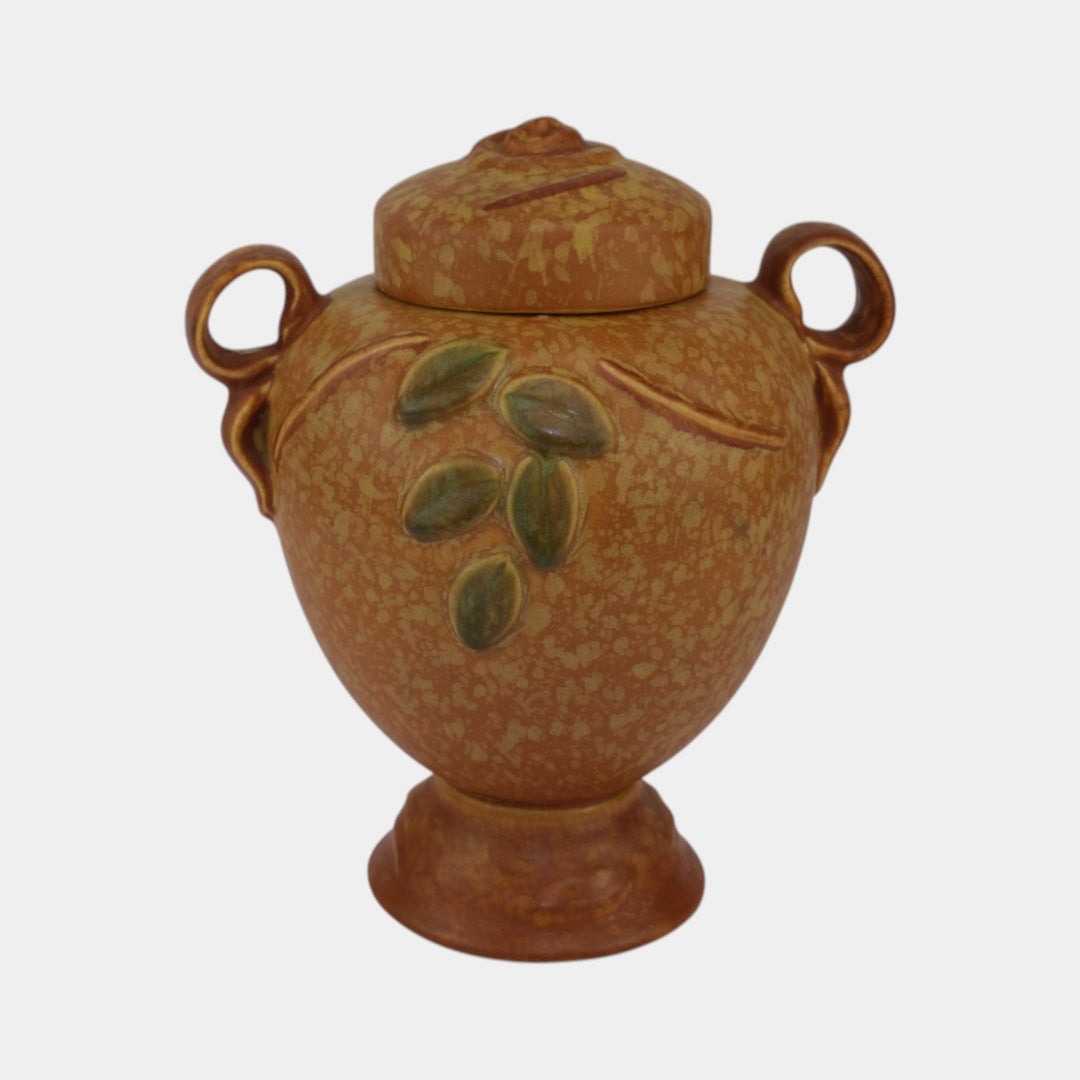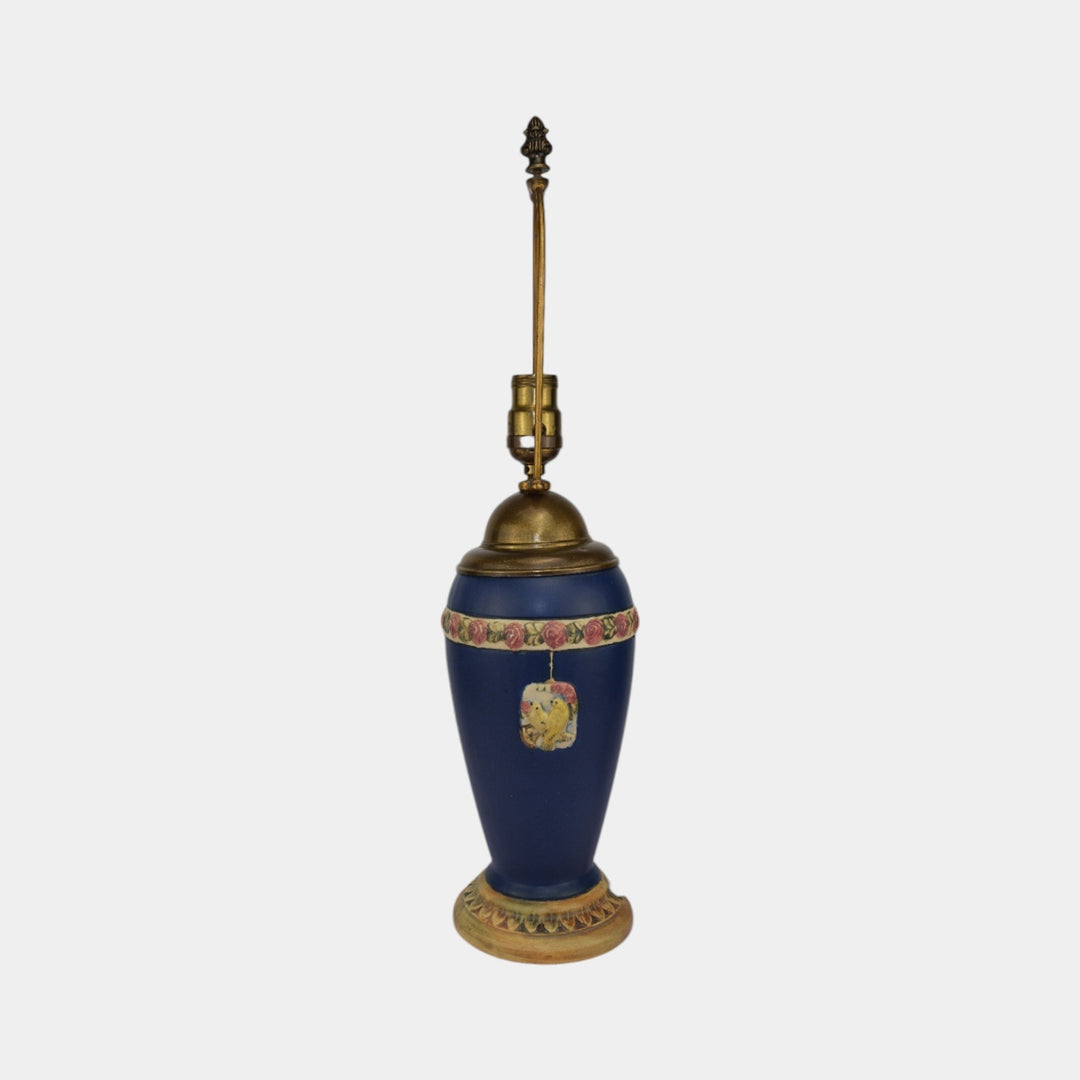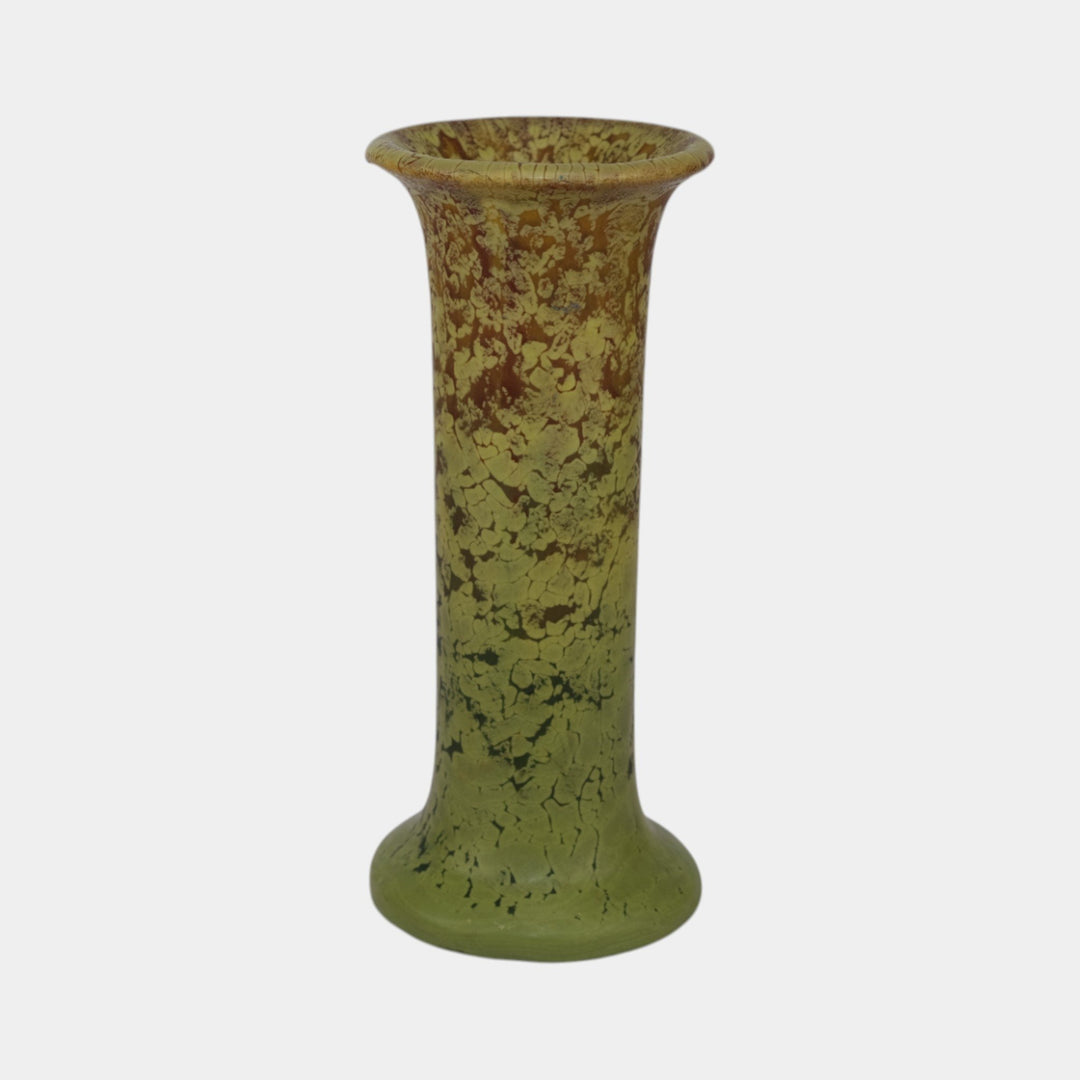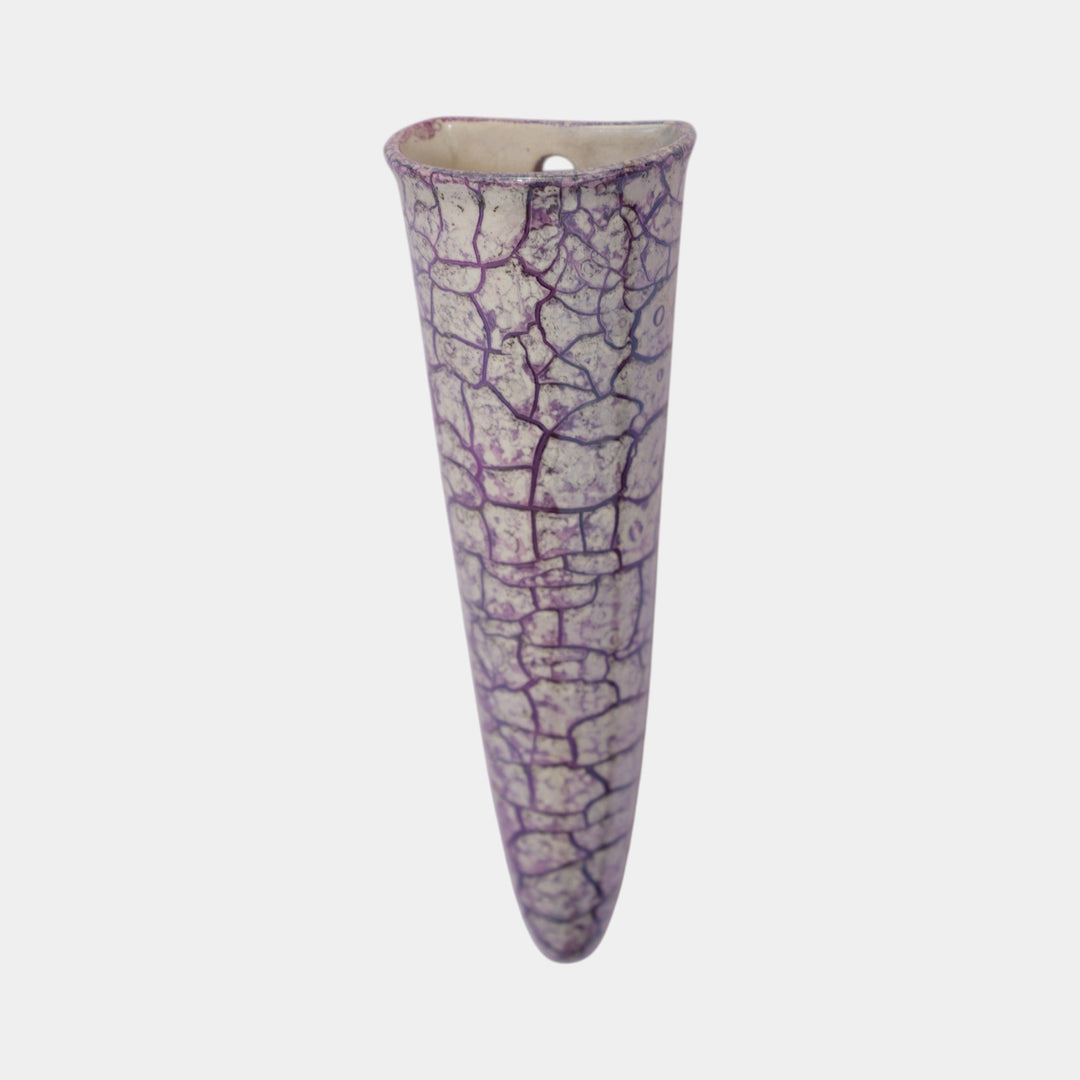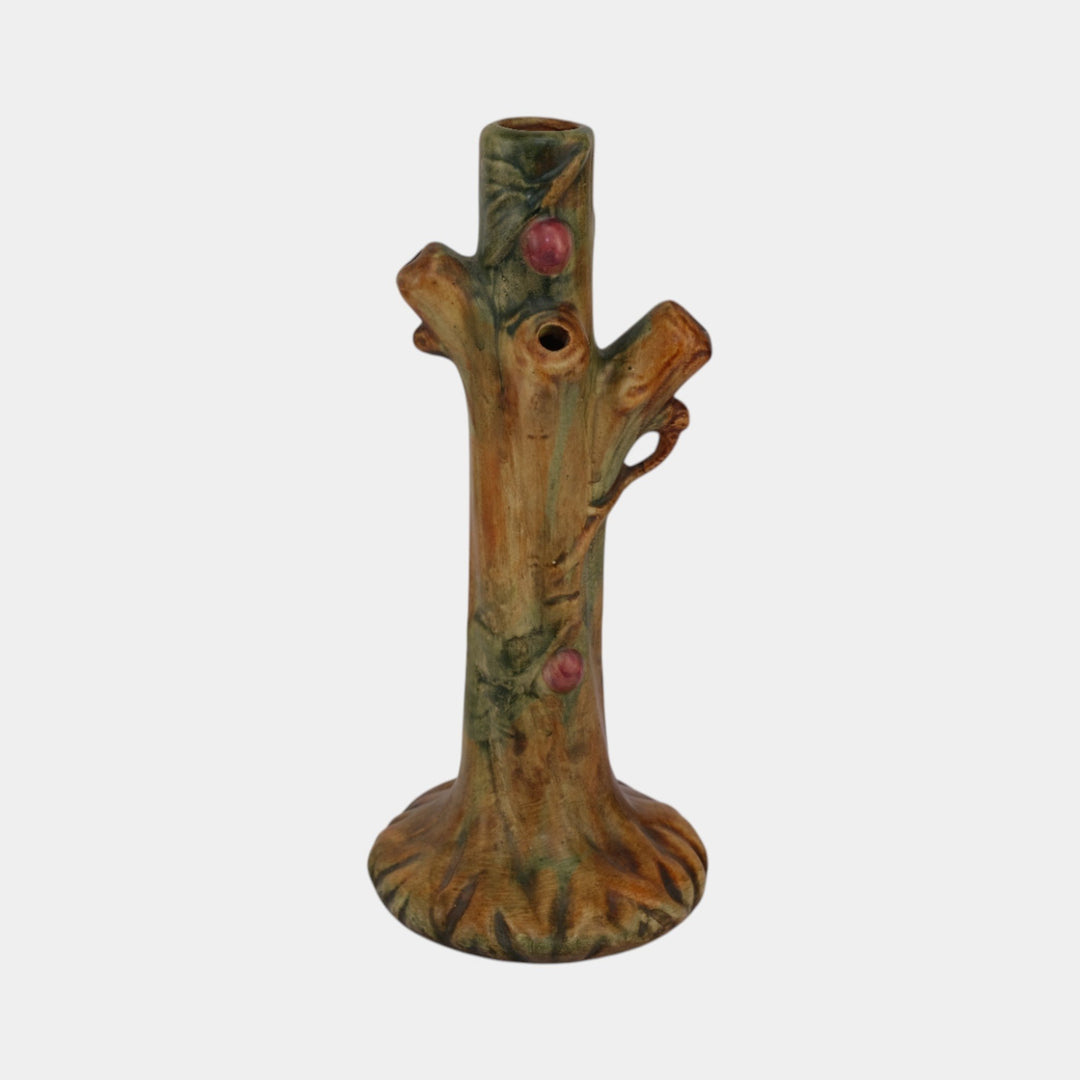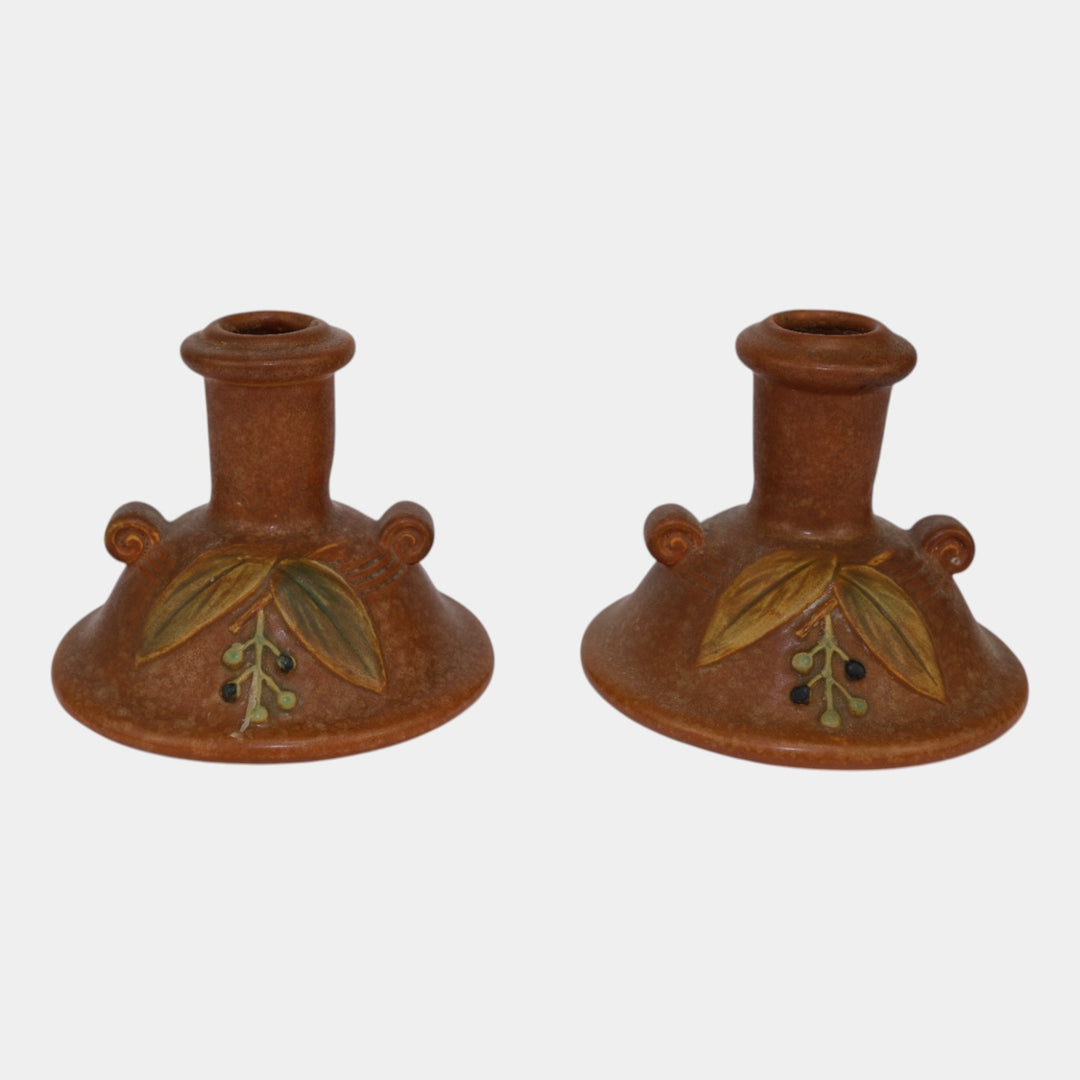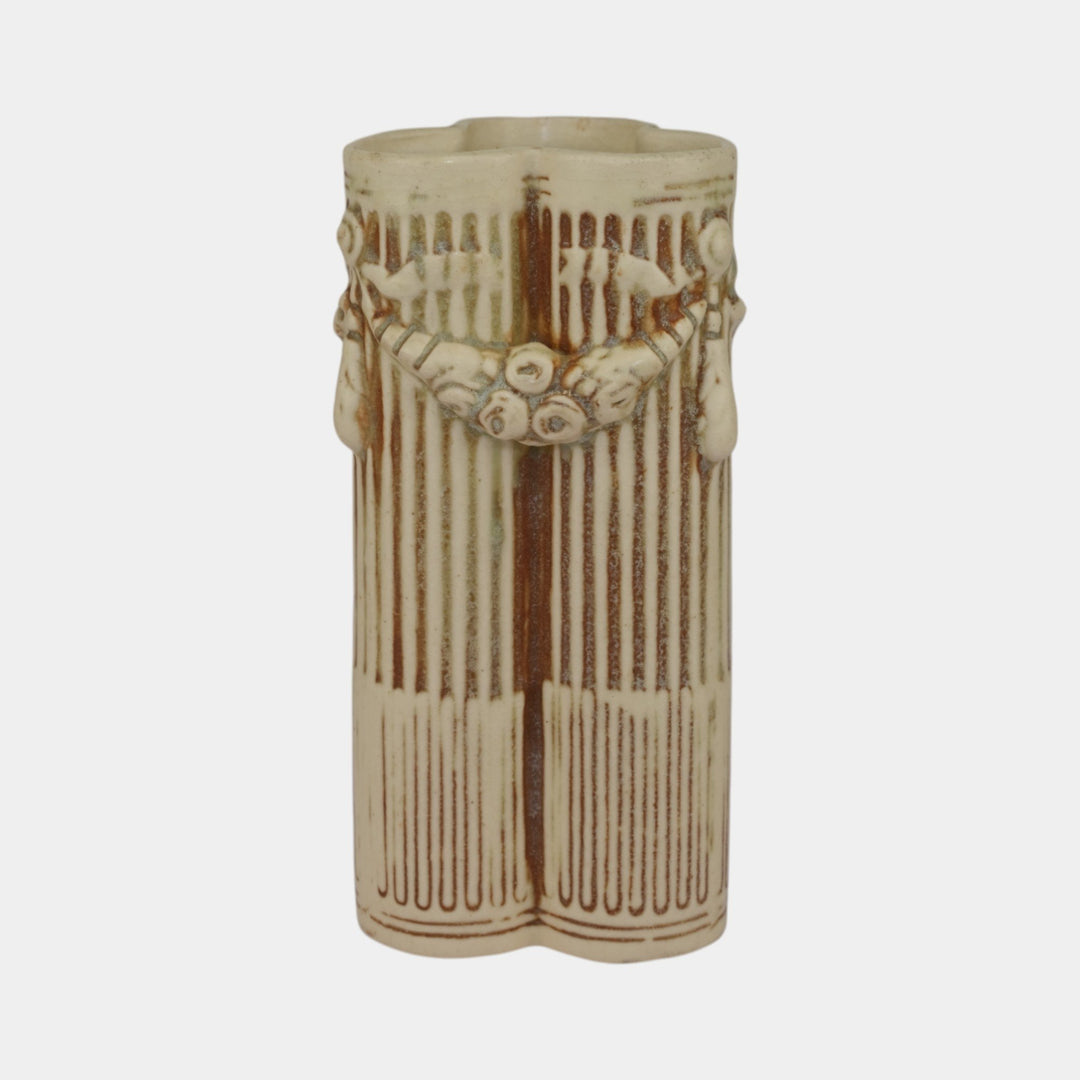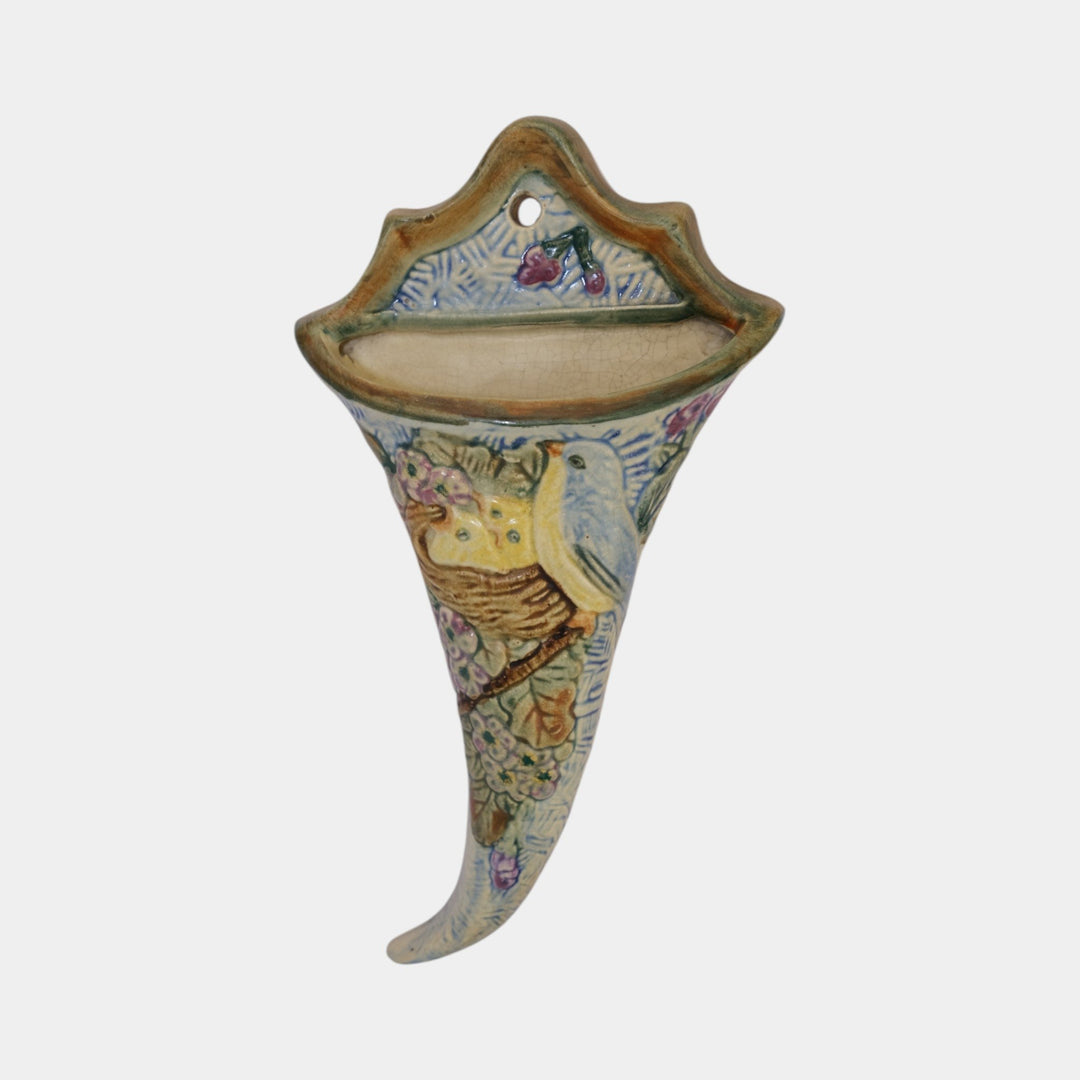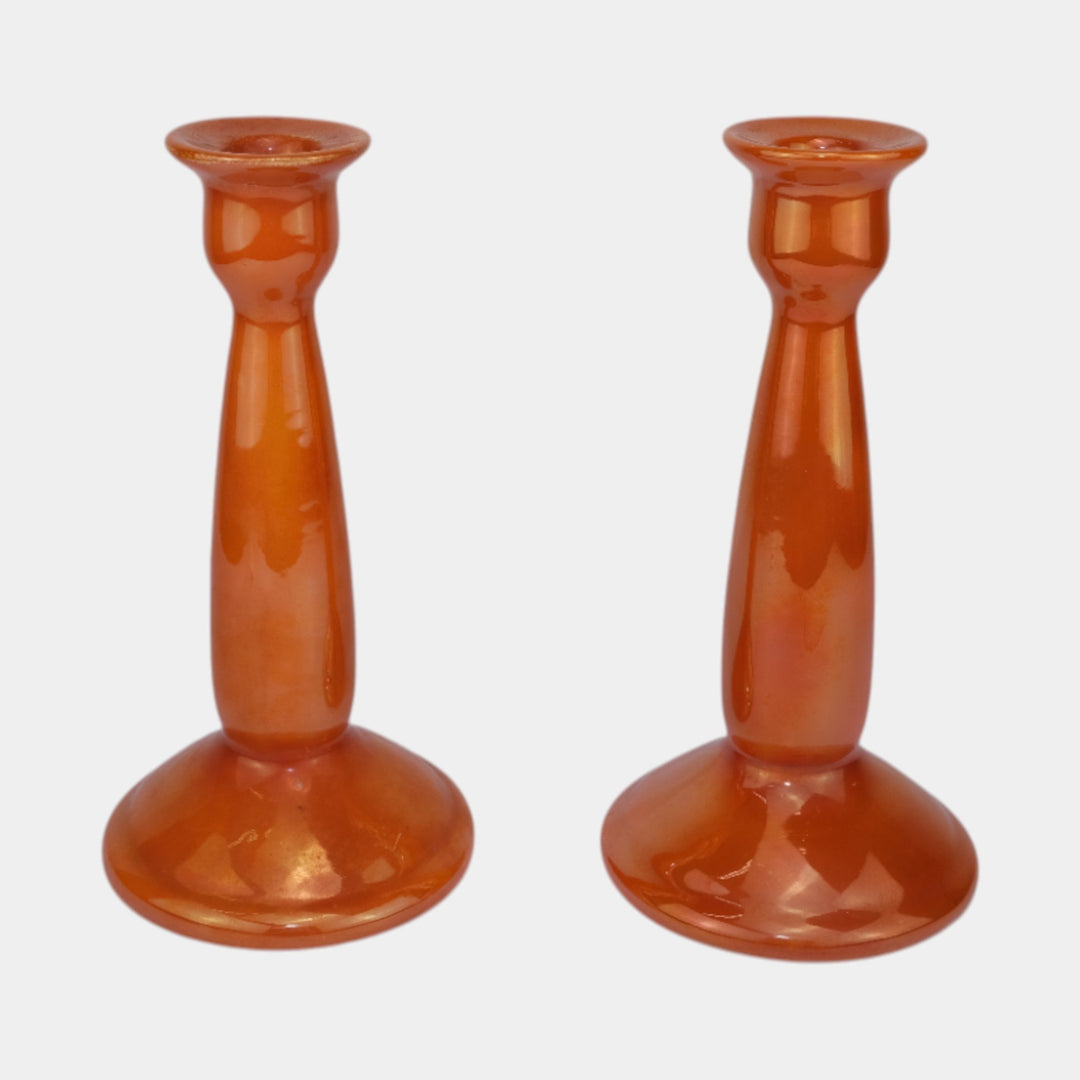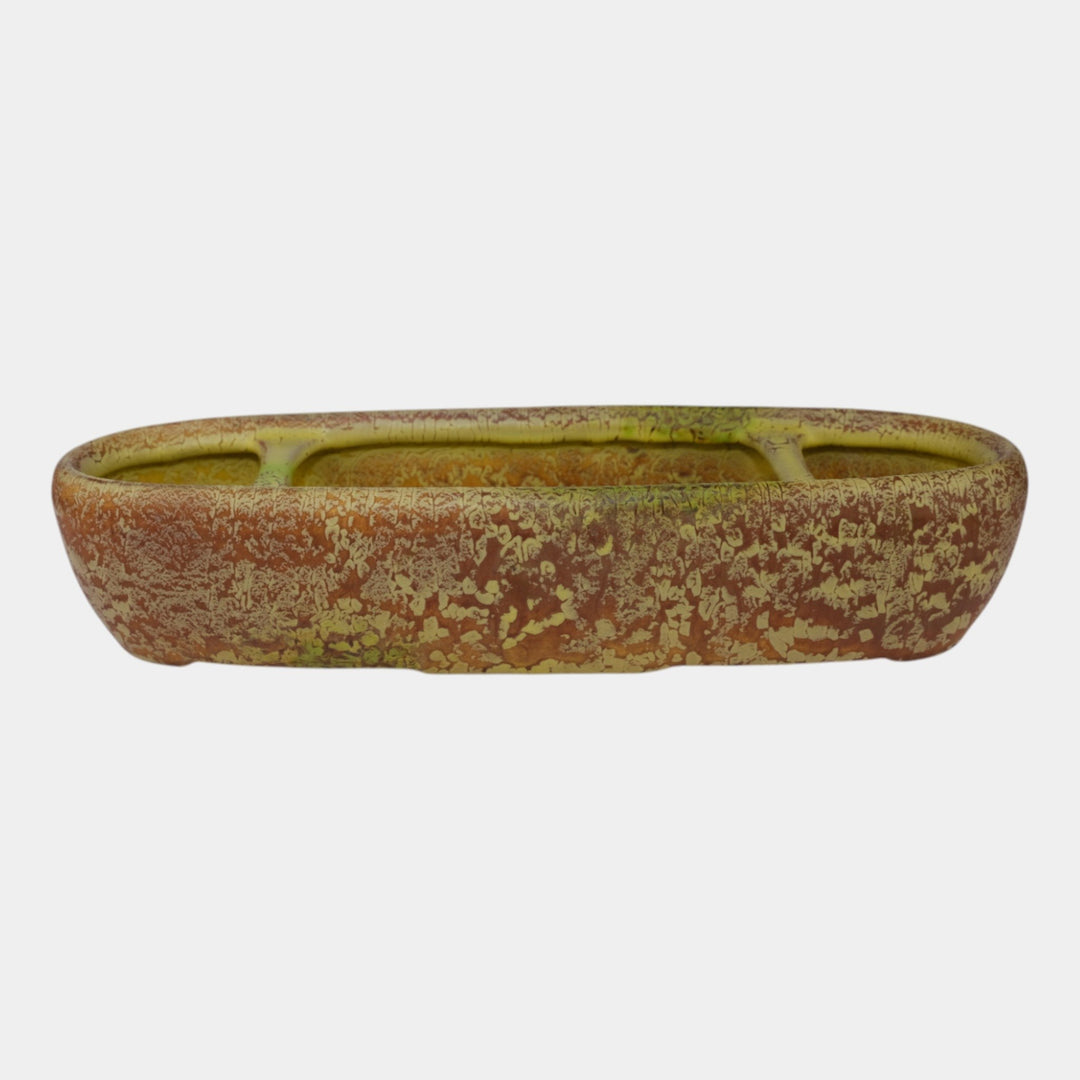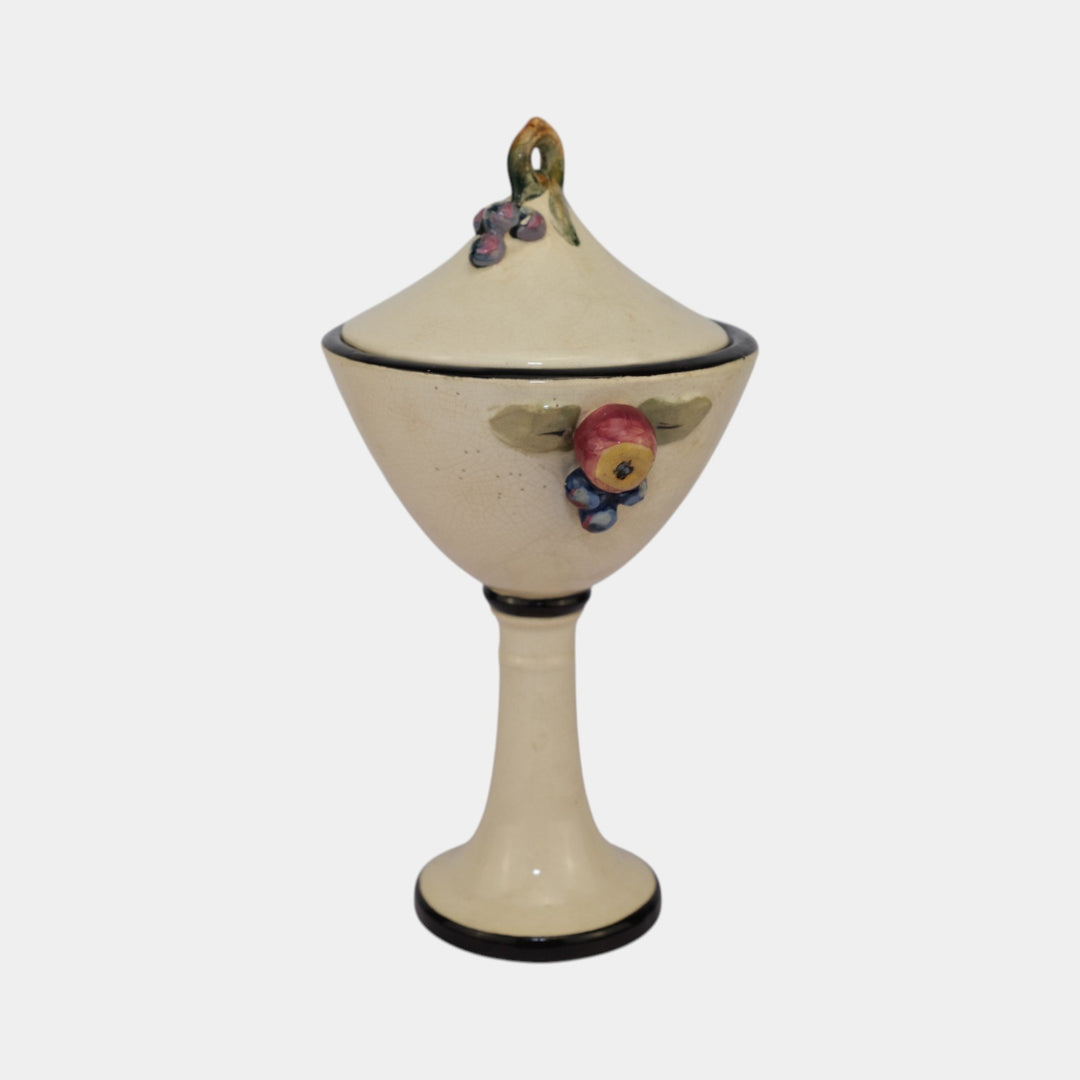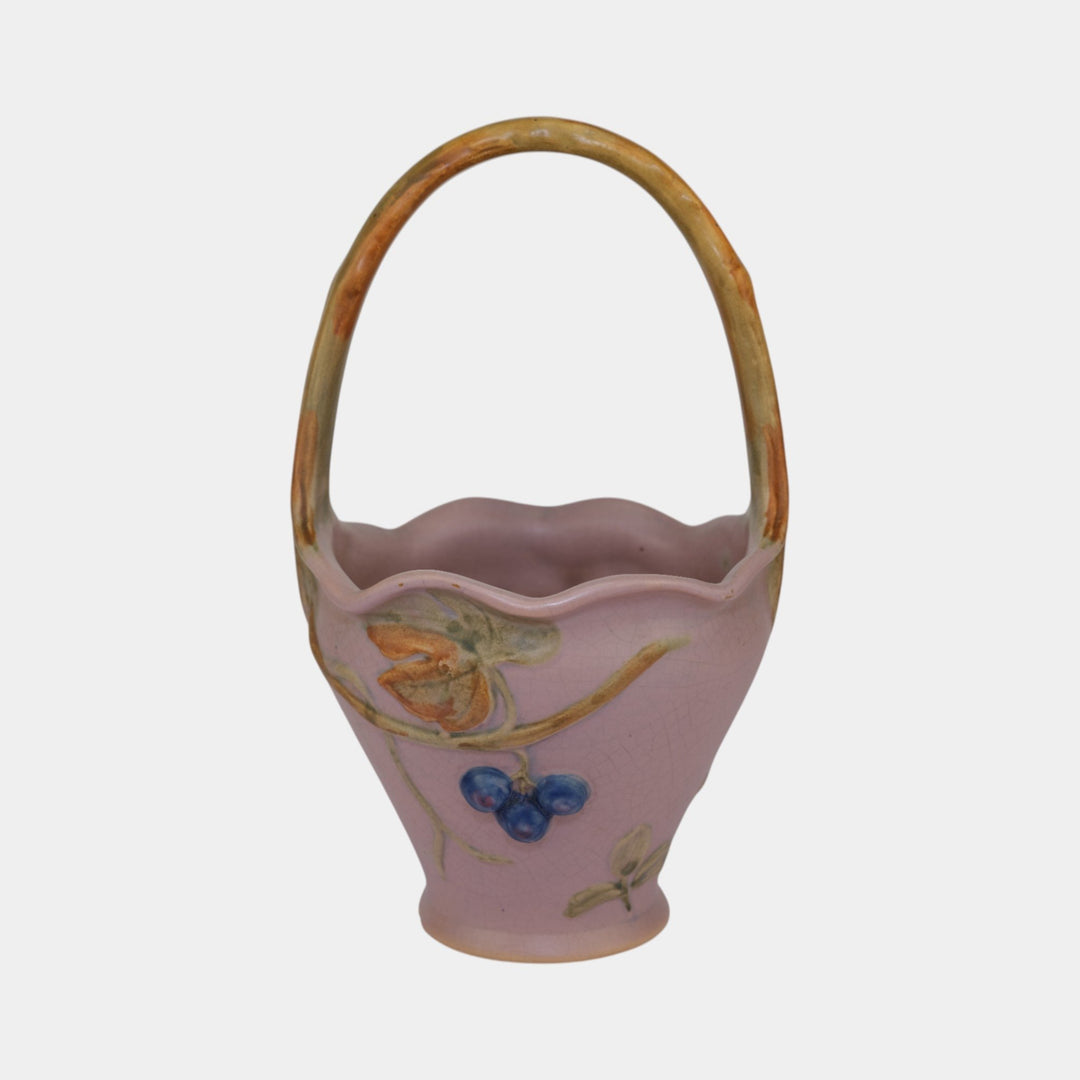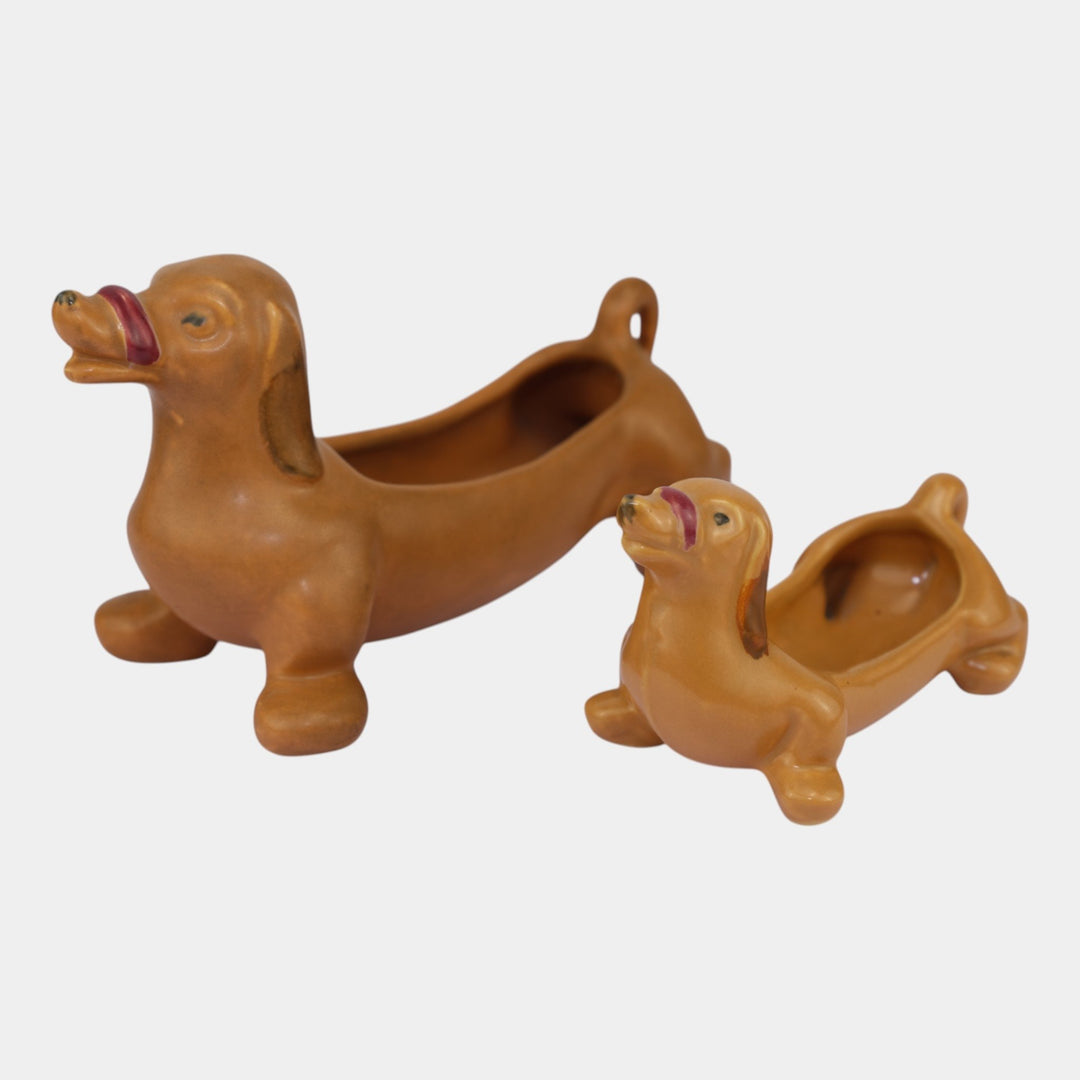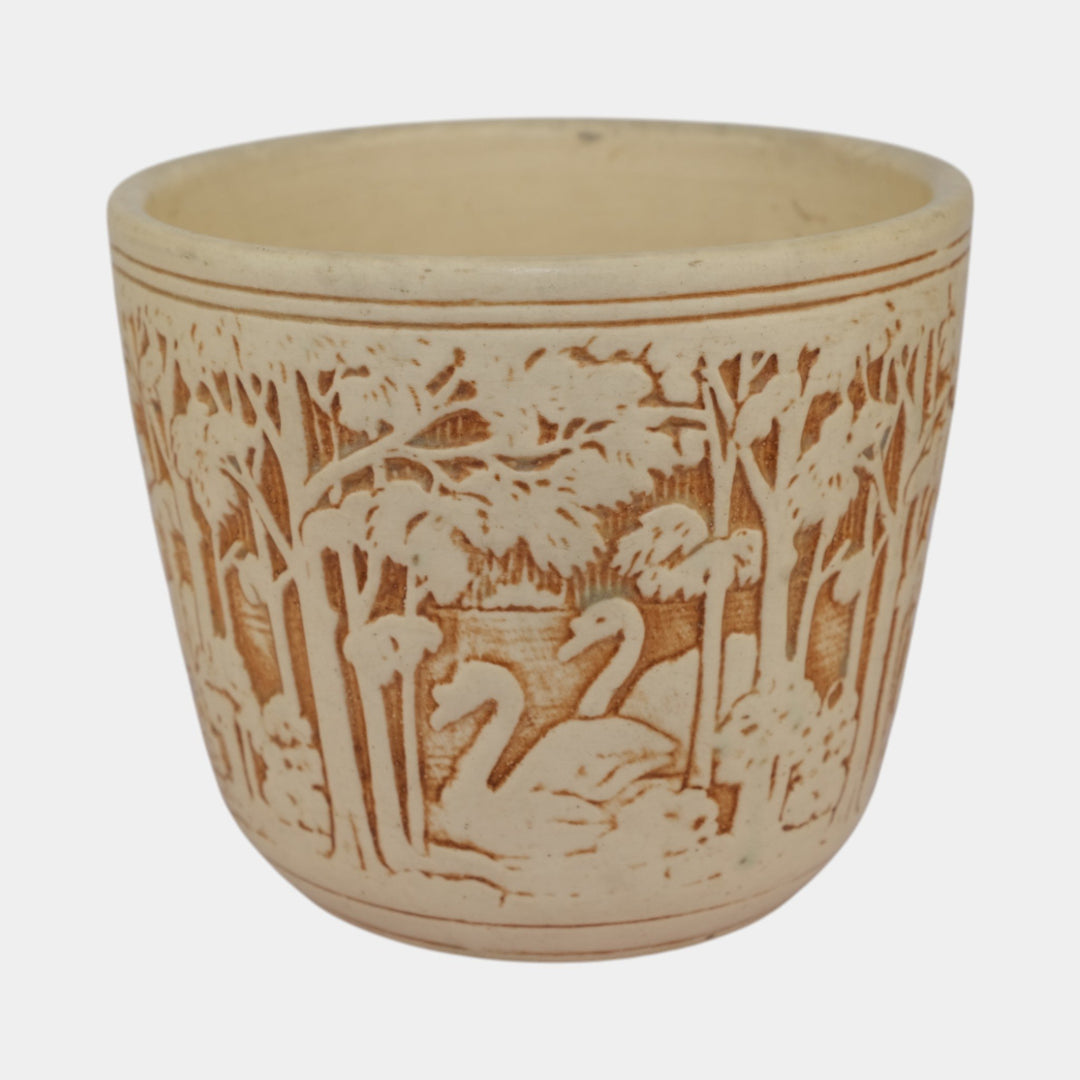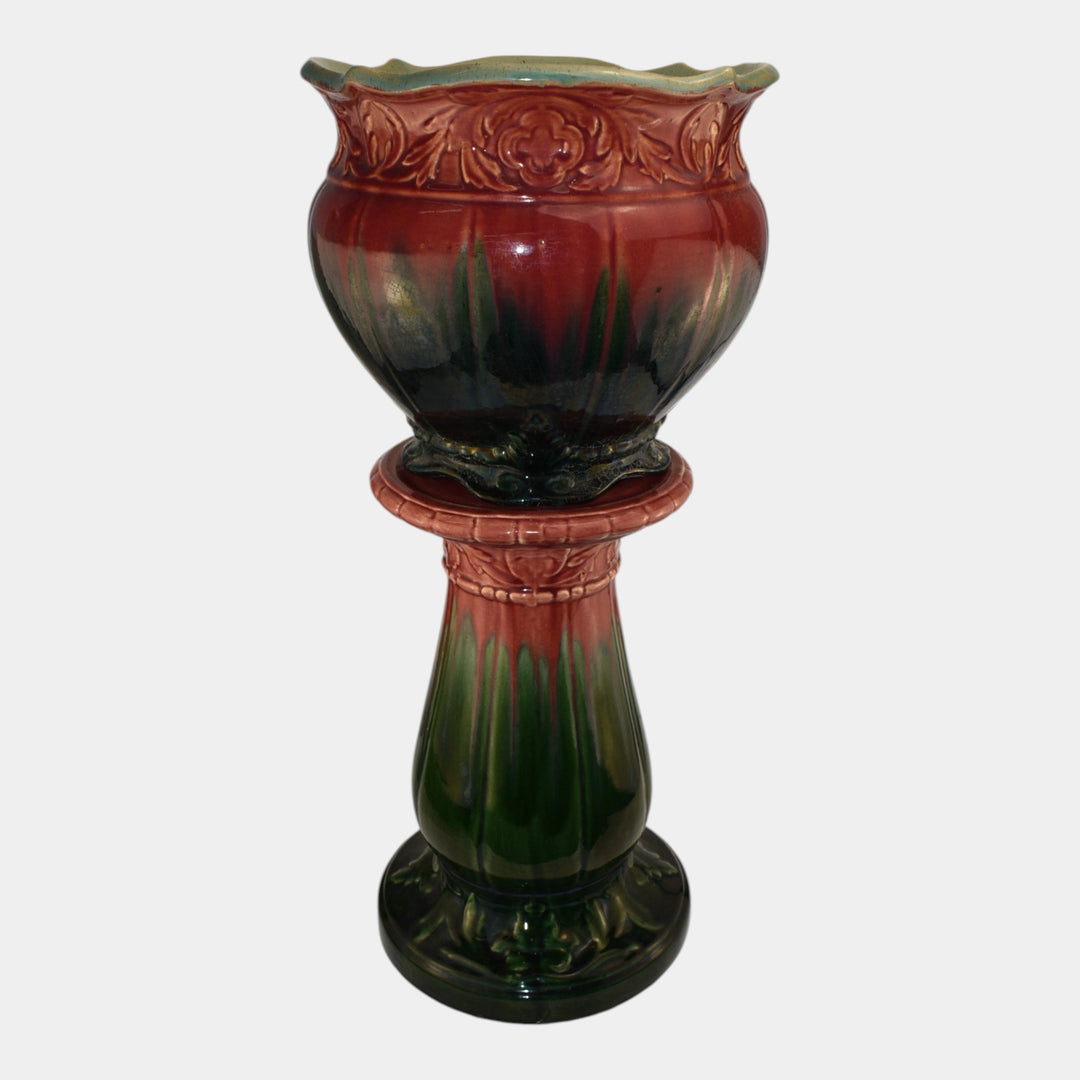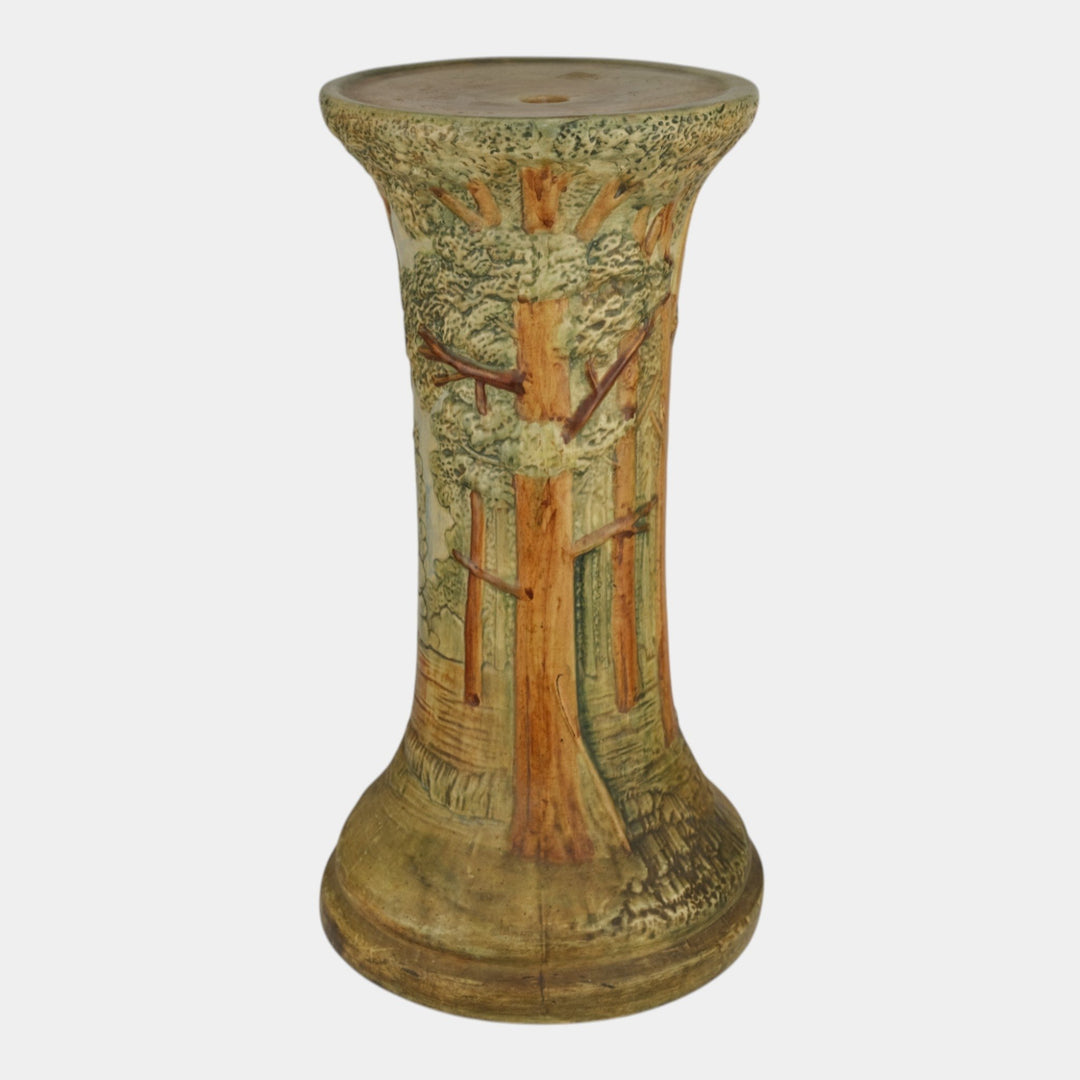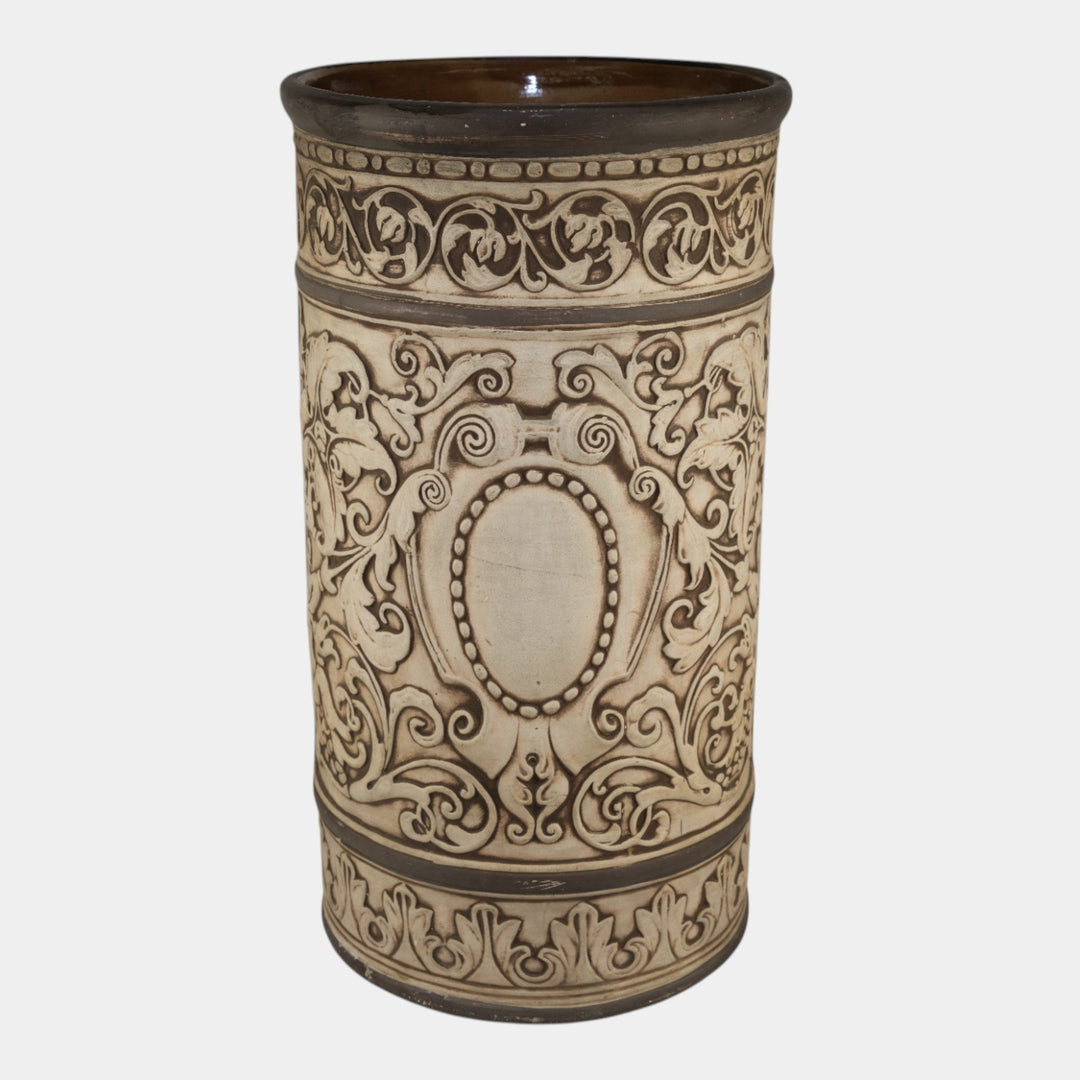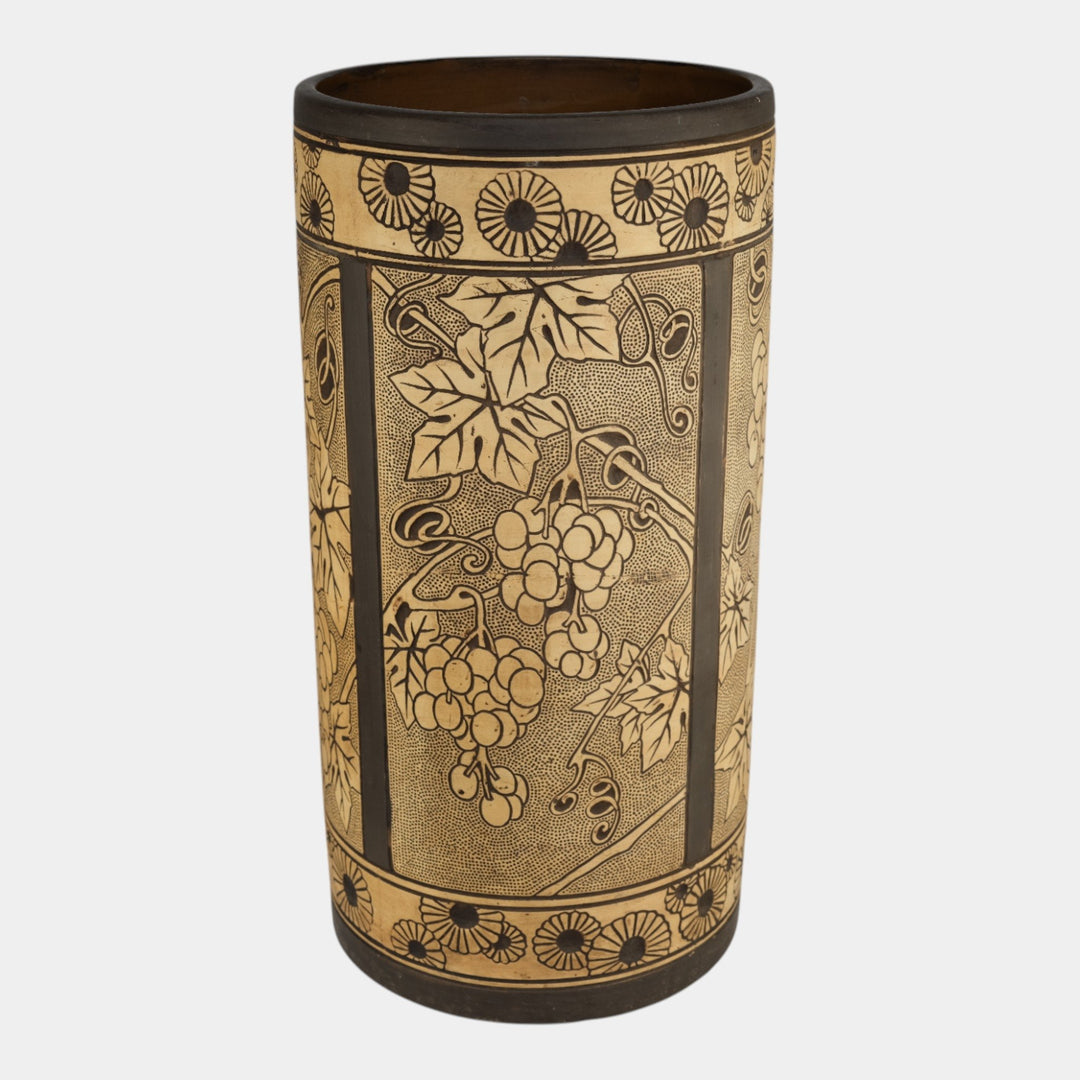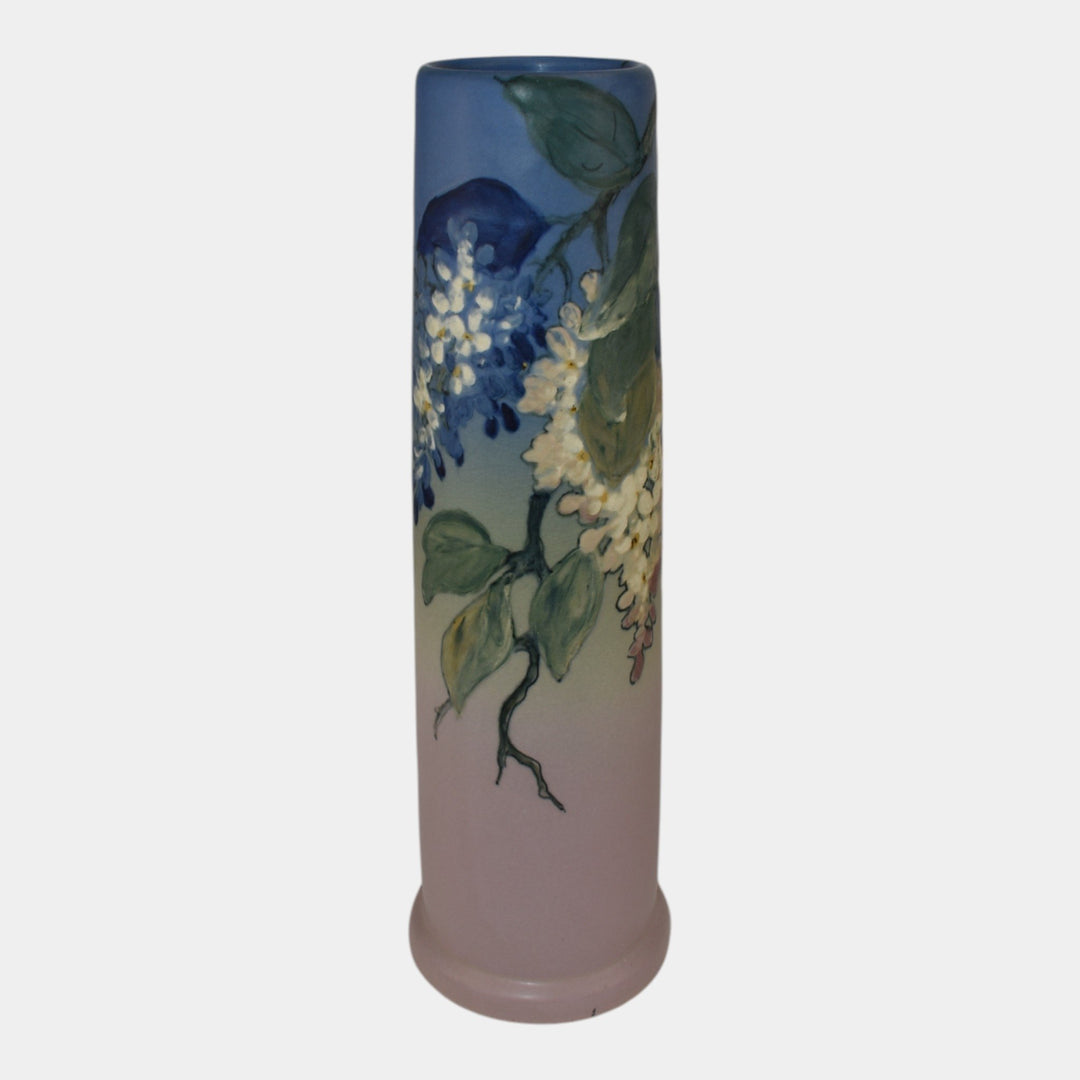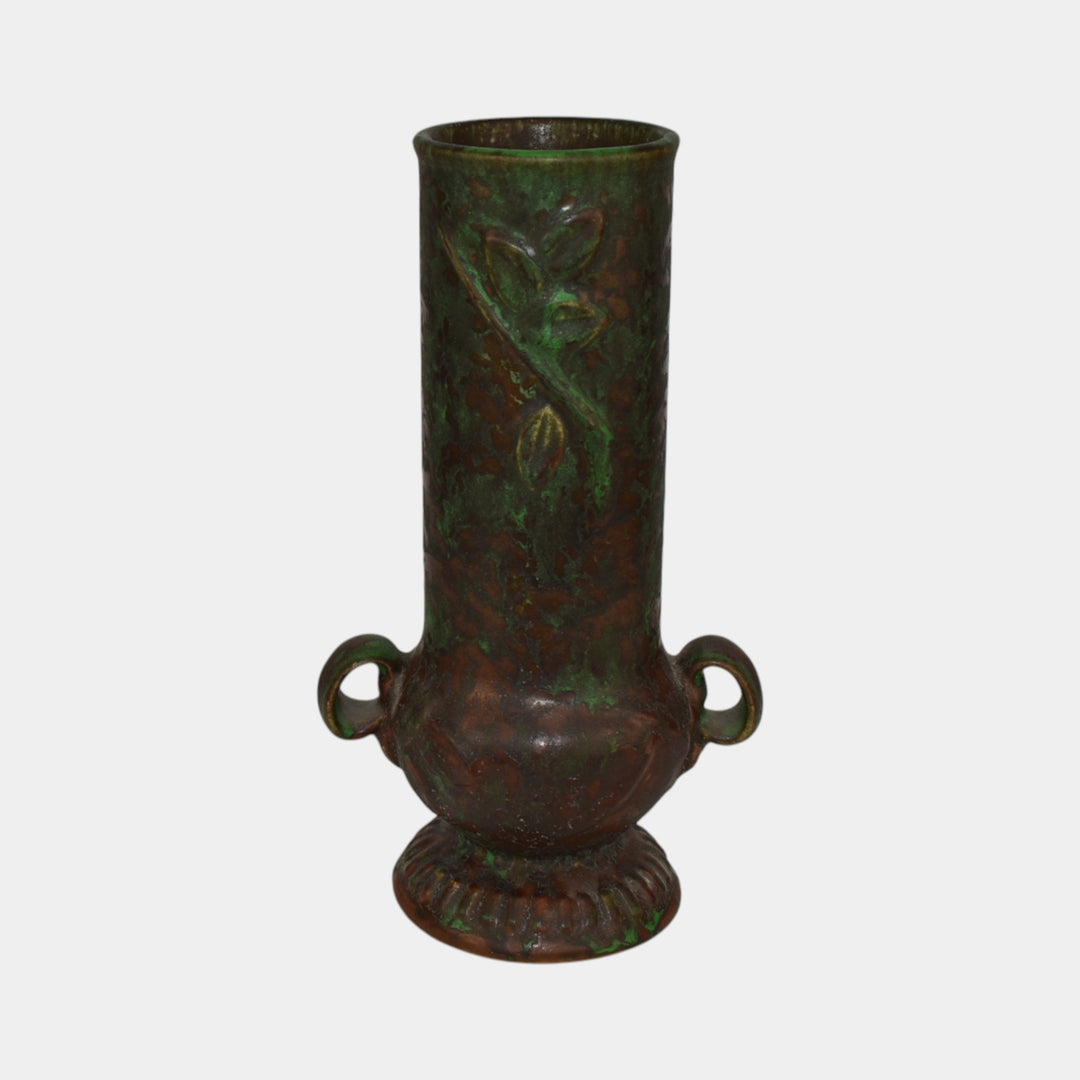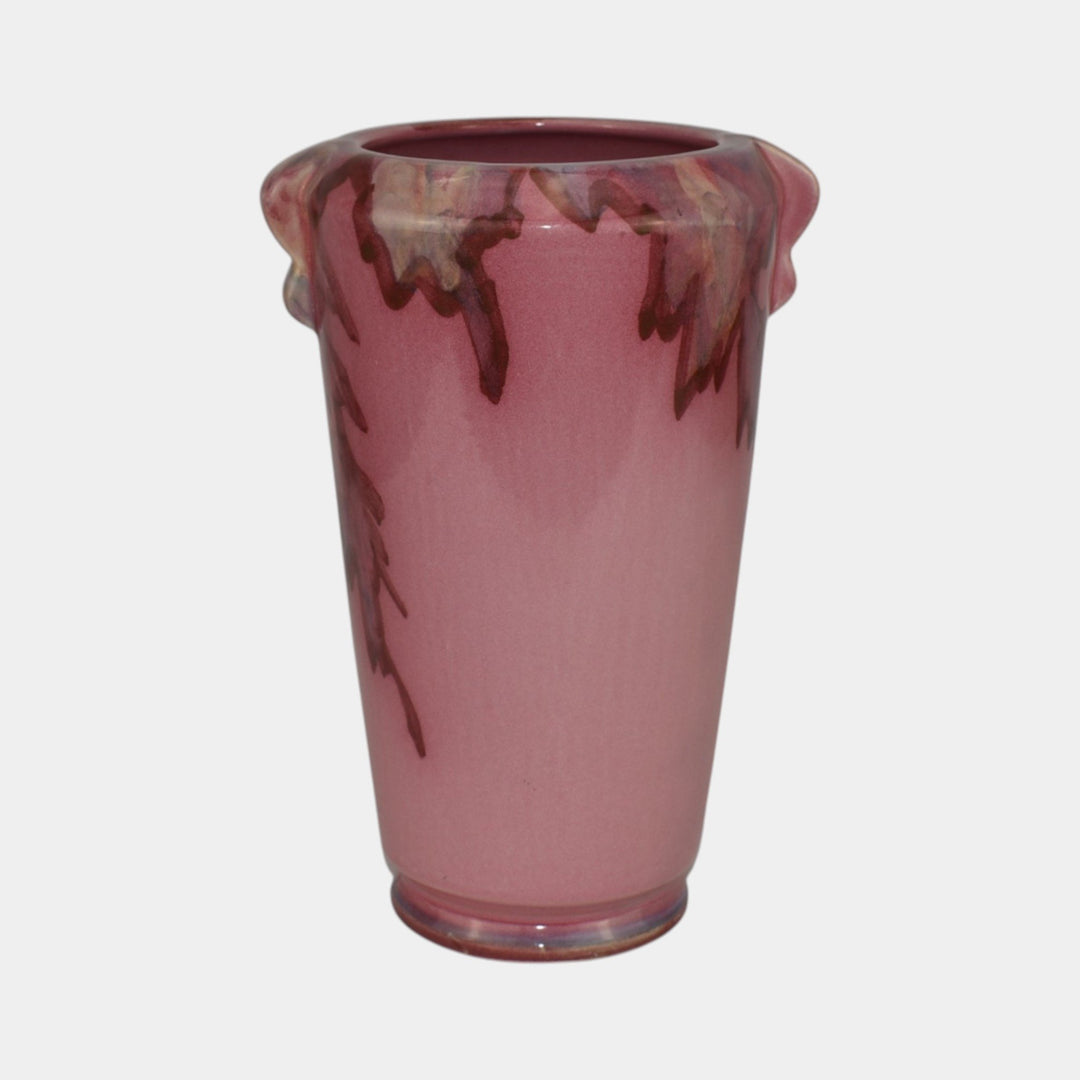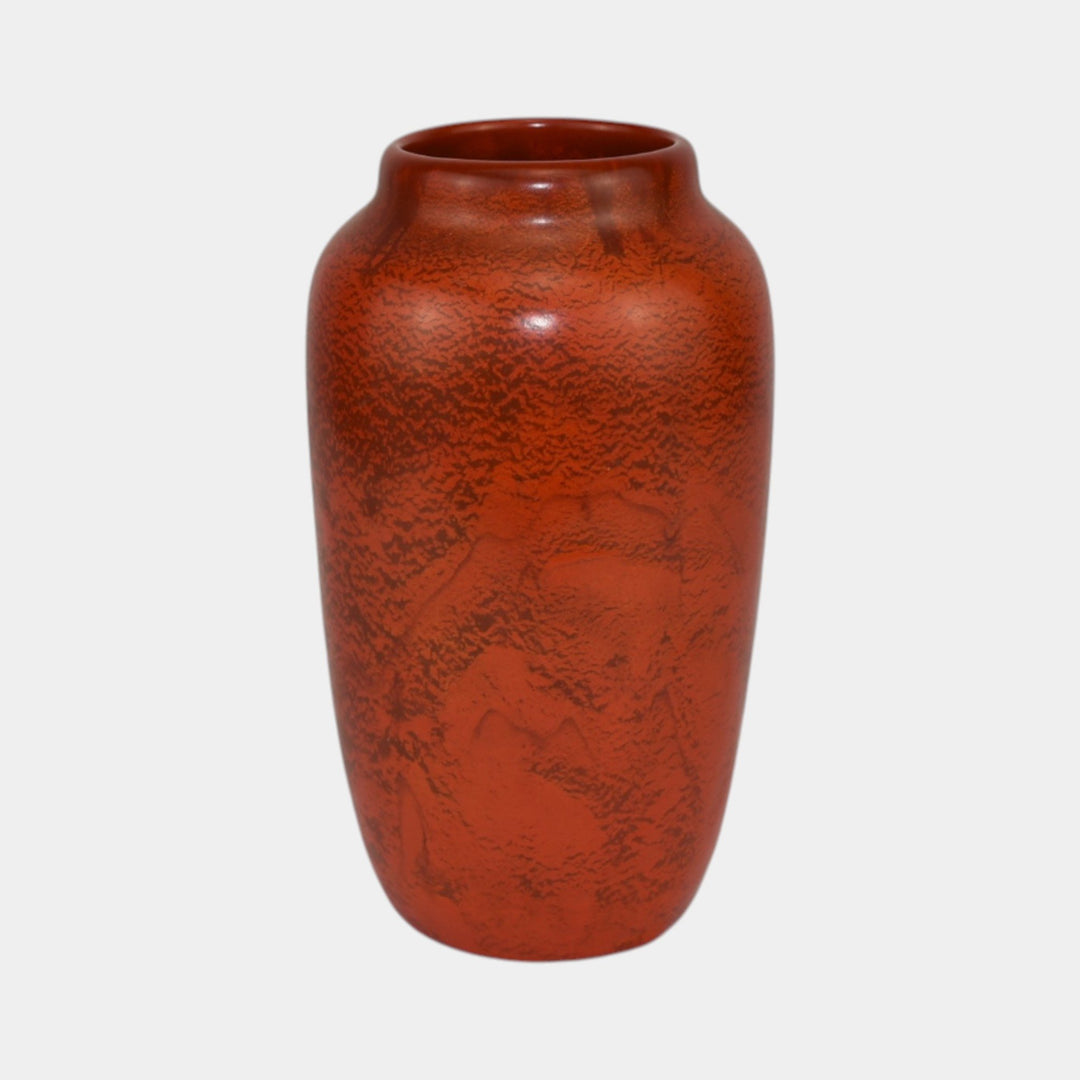Weller Pottery History, Marks, Patterns, and Artists
Weller Pottery History
One of the pioneers of Ohio art pottery was Samuel Augustus Weller, who created the seventy-year enterprise of Weller Pottery. He started his own business in 1872 in Fultonham, Ohio making utilitarian ware such as stoneware jars and clay flowerpots. But in 1882 Weller moved his small company to Zanesville, Ohio and by 1888, he had employed 68 potters to make art pottery at what historians call “the first edition” of the Putnam factory. As the factory grew in size and employees (175 active potters by 1894), Samuel Weller joined forces with other artisans such as William A. Long, Jaques Sicard, and Frederick Hurten Rhead. 
Despite a devastating fire in 1895, Weller pushed production every year, rebuilt the Putnam factory, and built a second pottery for manufacturing utility ware only. By 1915 Samuel Weller had established Weller Pottery as the world’s largest art pottery company with pieces that reflected the movements of the time; Arts and Crafts, Art Nouveau, Art Deco, and Modernism.
The prolific and wide-ranging business of Weller Pottery is difficult to summarize. While Weller employed international artists to invent new glazes and designs in secrecy, he mass produced other lines that competed well with companies like Roseville, Rookwood, Owens, and other Ohio area potteries.
In 1904, Weller set up a massive model pottery at the St. Louis Exposition, complete with his best potters at the kiln and a 7 ½ foot Aurelian vase for display. Weller Pottery took the Gold Medal in the Arts Category that year. By 1915, Samuel Weller had established Weller Pottery as the world’s largest art pottery company that reflected the Arts and Crafts, Art Nouveau, and Art Deco movements of the time.
The 1920s was a harried time for Weller Pottery, which transitioned from a sole proprietorship (i.e., Samuel Weller) to a corporation. A third factory was added to the company in 1924, where artist John Lessel created several new pottery lines, before Samuel Weller passed away in 1925. Weller’s nephew Harry Weller became the president of the company, which underwent another blow from a destructive fire in its new, third factory in 1927.
Weller Pottery turned more and more to commercial production and tile making and more utility items like beer mugs (only available after the repeal of the Prohibition). In the mid-1930s, the first and second factories closed as well, and under the management of several different presidents of the company, cooking utensils and inexpensive ornamental ware was made in the third pottery. Unfortunately, Weller Pottery closed completely in 1948.
[prc-collections-carousel]
Weller Pottery Marks
Identifying all the trademarks of Weller Pottery, as well as the order of what marks were used when, has been no straightforward task for art pottery researchers and collectors. Perhaps the numerous artists over the years, coupled with mass employment of potters and fire damage to the kilns, are at least partly to blame for the inconsistencies seen on Weller vases. 
For example, Weller Aurelian can be found with either a circular stamp trademark or a hand incised mark. It is believed by many Weller pottery collectors that the hand incised mark was used prior to 1900 and the circular stamp trademark was used after 1900.
Similarly, collectors will Weller Eocean vases with a variety of trademarks. Eocean can be found with either a circular Weller stamp or a hand incised trademark. It is commonly believed the hand incised trademark was used prior to 1900 and the circular stamp trademark was used after 1900. Weller also used a variety of names for the collectible Eocean line. You find Eocean vases marked Eosian Weller, and Eocean Rose.
Vases from the Louwelsa line have similar variations in the trademarks. Weller Louwelsa can be found with a hand-incised Weller mark or with the circular seal mark. The half circle seal trademark was used on Louwelsa vases between 1896 and the early 1900s.
In general from 1896 to the end of the first decade of the 1900s, most Weller Pottery was marked with a half circle seal that included the line name on top (in a half circle) with the straight “Weller” below. Around 1910, the standard Weller logo was changed to a double circle trademark with the pattern around the top of the circle and Weller in the bottom of the circle. This logo was used on lines such as Louwelsa, Art Nouveau, Floretta, and Etna. 
Also used between the late 1900s and 1925 was die stamp logo WELLER in block letters. At least two sizes of this WELLER block letter die stamp can be found on Weller vases from this time period.
Other popular Weller marks from the 1920s include the half-kiln and full-ink stamps. The full-kiln trademark was uses on vases from the middle 1920s, while the half-kiln mark was used on Weller pottery from the late 1920s.
Later, in the 1920s and 1930s, labels were used to mark Weller pottery. The labels range from a circular paper design, ink stamps, to a black and silver foil. Some of the labels were preprinted with the company and line name, and had spaces on the bottom for the stock number and price. Lines such as the Coppertone, Flemish, Hudson, Sabrinian and Silvertone are most known to carry such paper ‘fill in price’ label.
In addition to the label, the words “Weller” and “Weller Pottery” were incised by hand on pots from 1927 to 1933. Pottery made after 1935 could be found with an in-mold script of “Weller Pottery Since 1872” on the bottom, as well as script signatures from the artists. 

[prc-collections-carousel]
Weller Pottery Artists and Patterns
The first major artist at Weller Pottery was William A. Long, who created Weller Louwelsa in 1895. The Louwelsa line was designed to compete with Rookwood standard glaze and Roseville Rozane. The transparent standard glaze proved quite popular and was used for the mahogany-hued Aurelian line as well, although the Aurelian glaze was applied with a brush.
Long was soon replaced by Charles Babcock Upjohn, who served as Weller’s art director from 1885 to 1904. Weller Pottery released three lines of Dickensware from about 1897 to 1910. The first line, created by John Upjohn in 1897 and 1898 resembled the Louwelsa line, but with the glossy glaze over solid dark brown, blue or green backgrounds. Dickensware’s second line from 1897 to 1905 was quite a transformation; this time, Upjohn included graffito decorations ranging from Dickens, Indians, monks, golfers and forest animals, coupled with a background matte or high gloss glaze. Finally, in 1910, Frederick Hurten Rhead created the third, most hard to find, line with dark background shaded to light (like the Eocean), high gloss scenes from Dickens’ novels, and a black or white disc on one side, displaying the scene’s name or Charles Dickens’ profile. 
In the early 1900s Weller Pottery glaze line and pattern development was led by international artists. Frenchman Jaques Sicard and his assistant Henri Gellie worked in secret for two years to invent the metallic lustre glazed Sicard line. Sicard’s stay at Weller was short as he left for France in 1907, but Weller kept a large stock of this valuable Sicard line long after. In the meantime, English-born Frederick Hurten Rhead joined Weller from mid-1903 to 1904, to create four new lines; the Jap Birdimal, Weller Faience, L’Art Nouveau, and the Third Line Dickens Ware. Ranging from oriental motifs and Geisha girls to high gloss glazes and another, more cost-effective Dickens ware, Rhead brought creativity and innovation to the company.
Other recognized artists include Frank Ferrell, Dorothy England Laughead, and Rudolph Lorber. Lorber, who was born and studied in Austria, was in charge of designing new lines from 1905 to the 1930s, and was responsible for the Flemish, Forest, Ivory, Knifewood, Muskota, and Roma lines, among many others. The last artist of note was German John Lessell, who became Weller’s art director in 1920 and created lines such as the Chengtu, LaSa, Lamar and Marengo. Lessell, along with his assistant Art Wagner, raised the calibers of creativity and pottery making skill until 1925, the same year when it so happened that founder Samuel Weller passed away.















